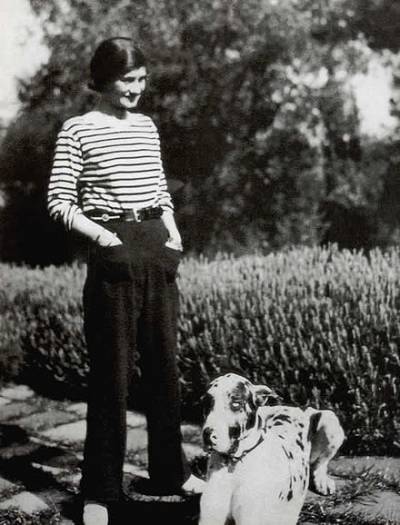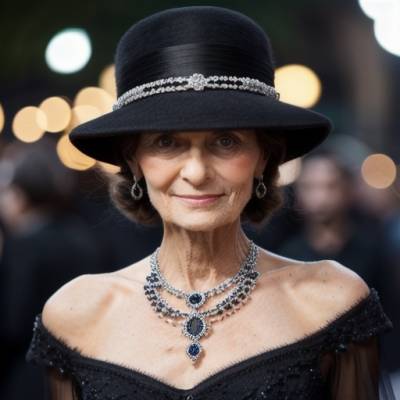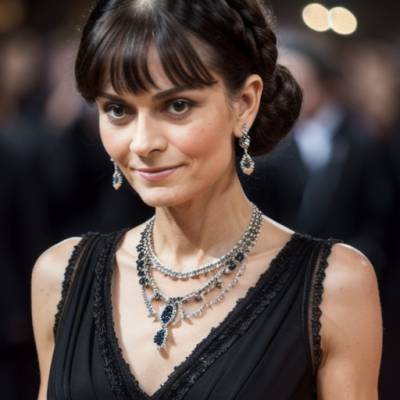Coco Chanel: An Inspirational Fashion Designer


Coco Chanel, born Gabrielle Bonheur Chanel on August 19, 1883, in Saumur, France, was a remarkable fashion designer who revolutionized the industry. With her innovative ideas and impeccable sense of style, she became a symbol of elegance and sophistication. This article will delve into the life history of Coco Chanel, exploring her marriages, iconic creations like the little black dress and hats, her famous perfume line, and her impact as a fashion innovator. Join us on this journey through the life and legacy of one of the most influential designers of all time.
Born into poverty in Saumur, France, Gabrielle Bonheur Chanel had a difficult childhood after losing her mother at an early age and being abandoned by her father to live in an orphanage with her sisters. However, these challenging circumstances did not deter young Gabrielle from pursuing her dreams.
At the age of 18, she left the orphanage and started working as a seamstress during the day while singing at cabarets in the evenings. It was during this time that she acquired the nickname "Coco," which later became her iconic brand name.

Throughout her life, Coco Chanel had a series of relationships with influential men, including Étienne Balsan, a wealthy textile heir who supported her financially and introduced her to the world of high society. Their relationship lasted for several years until Coco fell in love with Arthur "Boy" Capel, an English polo player and businessman. Tragically, Capel died in a car accident in 1919, leaving Coco devastated.
Despite these heartbreaks, Chanel continued to have affairs with prominent figures such as Grand Duke Dmitri Pavlovich of Russia and composer Igor Stravinsky. However, she never remarried or had children of her own.
One of Coco Chanel's most significant contributions to fashion was the creation of the little black dress (LBD). In the 1920s, black was primarily associated with mourning or servant uniforms, but Chanel saw its potential as a versatile color for elegant eveningwear.
Chanel's design featured simplicity and elegance, revolutionizing women's fashion by offering them an alternative to extravagant gowns. The LBD became an instant hit and continues to be a staple in every woman's wardrobe today.
Coco Chanel's love for hats started at an early age when she would often wear her father's flat-brimmed hat. This fascination led her to incorporate hats into her designs, becoming one of her signature style statements.
Her hat designs were characterized by their simplicity yet striking details like feathers, ribbons, and bows. Chanel believed that a well-chosen hat could transform an outfit completely and add a touch of sophistication to any ensemble.
In addition to her fashion creations, Coco Chanel also left an indelible mark on the fragrance industry. In 1921, she launched her first perfume, Chanel No. 5, which became an instant sensation.
Chanel No. 5 was a departure from the heavy floral scents popular at the time. It featured a blend of jasmine, rose, and sandalwood with a hint of aldehydes, creating a unique and timeless fragrance that still captivates the senses today.

Coco Chanel's dresses were renowned for their simplicity and comfort without compromising on style. She believed in liberating women from restrictive corsets and introduced loose-fitting dresses made from luxurious fabrics like tweed and jersey.
Her designs often featured clean lines, minimal embellishments, and innovative details such as pockets or pleats. Chanel's dresses offered women freedom of movement while maintaining an air of elegance and sophistication.
Coco Chanel was not afraid to challenge societal norms and push boundaries in the world of fashion. She introduced trousers for women when they were considered unconventional attire, breaking free from gender stereotypes.
Chanel also popularized the concept of mixing high-end pieces with more casual items, such as pairing couture jackets with simple skirts or jeans. Her innovative approach to fashion revolutionized the industry by making it more accessible and adaptable to different lifestyles.

In 1918, Coco Chanel purchased a building at Rue Cambon in Paris that would become her iconic fashion house headquarters. This mansion served as both her residence and workspace until her death in 1971.
Today, visitors can explore Coco Chanel's apartment on the second floor of the mansion, where she entertained friends and clients. The space has been preserved exactly as she left it, offering a glimpse into her personal life and creative process.
During World War II, Coco Chanel lived in the Ritz Hotel in Paris in occupied France, where she entered into a romantic relationship with a high-ranking German intelligence officer named Hans Günther von Dincklage. Chanel herself became an intelligence operative for the Nazis and worked as a spy, directly involved in a plan for the Third Reich to take control of Madrid. She also arranged for the release of a mutual friend of hers and Churchill's from an Italian prison and traveled to Madrid with Dincklage, where the friend was instructed to hand over Chanel's letter to Churchill at the British Embassy. However, this plan was blown up when the friend denounced Chanel and her associates as German spies. Chanel's wartime dealings with the Nazis were controversial and have been the subject of much scrutiny in recent years.
Coco Chanel passed away on January 10, 1971, at the age of 87 in her suite at the Ritz Hotel in Paris. She died of natural causes, leaving behind a legacy that continues to inspire generations of fashion enthusiasts.
Despite her success and contributions to the fashion industry, Coco Chanel had a complex personality and faced criticism for her choices during World War II. However, her impact as a visionary designer cannot be denied, and her influence can still be seen in modern fashion trends.
Q: What is Coco Chanel best known for?
A: Coco Chanel is best known for revolutionizing women's fashion with iconic creations like the little black dress and introducing trousers for women.
Q: Did Coco Chanel get married?
A: No, Coco Chanel never got married. She had several relationships throughout her life but never remarried after the death of Arthur "Boy" Capel.
Q: Where can I learn more about Coco Chanel?
A: For more information about Coco Chanel's life and legacy, you can visit authoritative websites such as Biography.com and Vogue.
Q: Is there a video about Coco Chanel that I can watch?
A: Yes! You can watch the informative video titled "Coco Before Chanel - Official Trailer" on YouTube to learn more about Coco Chanel's early life and rise to fame.
In conclusion, Coco Chanel was an exceptional fashion designer who left an indelible mark on the industry. Her innovative ideas, timeless creations like the little black dress, and fearless approach to fashion continue to inspire designers and fashion enthusiasts worldwide. Coco Chanel's legacy lives on, reminding us that true style is about embracing individuality and breaking boundaries.